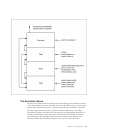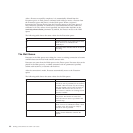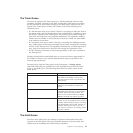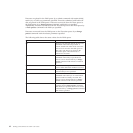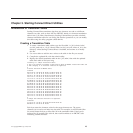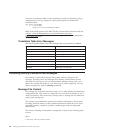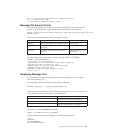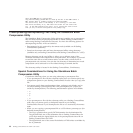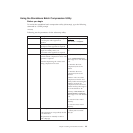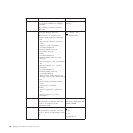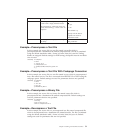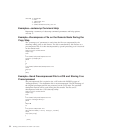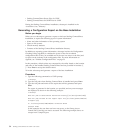
xxx is a 3-character Sterling Connect:Direct component identifier
nnn is a 3-digit decimal number
I is the standard, though not required, suffix
Message File Record Format
The following example shows the format of the message file record. Each record
can be up to 4K bytes long. Optional parameters and values are in brackets.
message id [long.text detailed message explanation] [mod.name issuing module name] short.text
message summary
Following are the parameters for the message file record:
Parameter Description Values
long.text A string that explains the message in detail. A text string
mod.name The name of the source module issuing the
message ID.
Source module name
short.text A summary of the message. This field is
required.
Summary message, up to
72 characters
The following example illustrates a sample message record for XCPS008I:
XCPS008I:\ :mod.name=NUSMCP00.C:\
:short.text=File is not VB datatype.:\
:long.text=File is not variable block. Change sysopts datatype to\
either binary or text to transfer this file.\
\nSYSTEM ACTION-> the copy step failed and CD processing\
continued with the next process step.\
\nRESPONSE-> change the sysopts datatype to either\
binary or text.:\
Displaying Message Text
Use the ndmmsg command to display text in the message file. You can display
both short and long text.
The following command illustrates the format for ndmmsg:
ndmmsg -f msgfname [-l | -s] msgid1 [msgid2 [msgid3 [...]]]
Following are the parameters for the ndmmsg command. If you do not specify an l
or s parameter, both short and long text are displayed.
Parameter Description
-f Specifies the name of the message file.
-l Displays the long text of a message.
-z Displays the short text of a message.
Following is a sample ndmmsg command:
ndmmsg -f /usr/ndmunix/msgfile.cfg XCMG000I
Output from the command is displayed in the following example:
rc=&rc
fdbk=&fdbk
mod.name=NUCMRG00.C
func.name=ndmapi_sendcmd
Chapter 3. Sterling Connect:Direct Utilities 47



